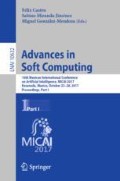Abstract
There is no standard definition of outliers, but most authors agree that outliers are points far from other data points. Several outlier detection techniques have been developed mainly with two different purposes. On one hand, outliers are the interesting observations, like in fraud detection, on the other side, outliers are considered measurement observations that should be removed from the analysis, e.g. robust statistics. In this work, we start from the observation that outliers are effected by the so called Simpson paradox: a trend that appears in different groups of data but disappears or reverses when these groups are combined. Given a dataset, we learn a regression tree. The tree grows by partitioning the data into groups more and more homogeneous of the target variable. At each partition defined by the tree, we apply a box plot on the target variable to detect outliers. We would expected that deeper nodes of the tree contain less and less outliers. We observe that some points previously signaled as outliers are no more signaled as such, but new outliers appear. The identification of outliers depends on the context considered. Based on this observation, we propose a new method to quantify the level of outlierness of data points.
Access this chapter
Tax calculation will be finalised at checkout
Purchases are for personal use only
References
Hawkins, D.M.: Identification of Outliers, vol. 11. Springer, Dordrecht (1980). https://doi.org/10.1007/978-94-015-3994-4
Singh, K., Upadhyaya, S.: Outlier detection: applications and techniques. Int. J. Comput. Sci. Issues 9(1), 307–323 (2012)
Acuna, E., Rodriguez, C.: A meta analysis study of outlier detection methods in classification. Technical paper, Department of Mathematics, University of Puerto Rico at Mayaguez (2004)
Hodge, V.J., Austin, J.: A survey of outlier detection methodologies. Artif. Intell. Rev. 22(2), 85–126 (2004)
Chandola, V., Banerjee, A., Kumar, V.: Anomaly detection: a survey. ACM Comput. Surv. (CSUR) 41(3), 15 (2009)
Shewhart, W.A.: Economic Control of Quality of Manufactured Product. ASQ Quality Press, Milwaukee (1931)
Breunig, M.M., Kriegel, H.-P., Ng, R.T., Sander, J.: LOF: identifying density-based local outliers. In: ACM SIGMOD record, vol. 29, pp. 93–104. ACM (2000)
Ribeiro, R.P., Oliveira, R., Gama, J.: Detection of fraud symptoms in the retail industry. In: Montes-y-Gómez, M., Escalante, H.J., Segura, A., Murillo, J.D. (eds.) IBERAMIA 2016. LNCS (LNAI), vol. 10022, pp. 189–200. Springer, Cham (2016). https://doi.org/10.1007/978-3-319-47955-2_16
Breiman, L., Friedman, J., Olshen, R., Stone, C.: Classification and Regression Trees. Wadsworth and Brooks, Monterey (1984)
Lichman, M.: UCI machine learning repository (2013)
Therneau, T., Atkinson, B., Ripley, B.: rpart: Recursive Partitioning and Regression Trees. R package version 4.1-10 (2015)
R Development Core Team: R: a language and environment for statistical computing. R Foundation for Statistical Computing, Vienna, Austria (2008). ISBN 3-900051-07-0
Tsanas, A., Xifara, A.: Accurate quantitative estimation of energy performance of residential buildings using statistical machine learning tools. Energy Build. 49, 560–567 (2012)
Blyth, C.R.: On Simpson’s paradox and the sure-thing principle. J. Am. Statist. Assoc. 67(338), 364–366 (1972)
Ackowledgements
This work is financed by the European Regional Development Fund through the COMPETE 2020 Programme within project POCI-01-0145-FEDER-006961, and by National Funds through the FCT - Fundaao para a Cincia e a Tecnologia as part of project UID/EEA/50014/2013.
Author information
Authors and Affiliations
Corresponding author
Editor information
Editors and Affiliations
Rights and permissions
Copyright information
© 2018 Springer Nature Switzerland AG
About this paper
Cite this paper
Portela, E., Ribeiro, R.P., Gama, J. (2018). Outliers and the Simpson’s Paradox. In: Castro, F., Miranda-Jiménez, S., González-Mendoza, M. (eds) Advances in Soft Computing. MICAI 2017. Lecture Notes in Computer Science(), vol 10632. Springer, Cham. https://doi.org/10.1007/978-3-030-02837-4_22
Download citation
DOI: https://doi.org/10.1007/978-3-030-02837-4_22
Published:
Publisher Name: Springer, Cham
Print ISBN: 978-3-030-02836-7
Online ISBN: 978-3-030-02837-4
eBook Packages: Computer ScienceComputer Science (R0)

